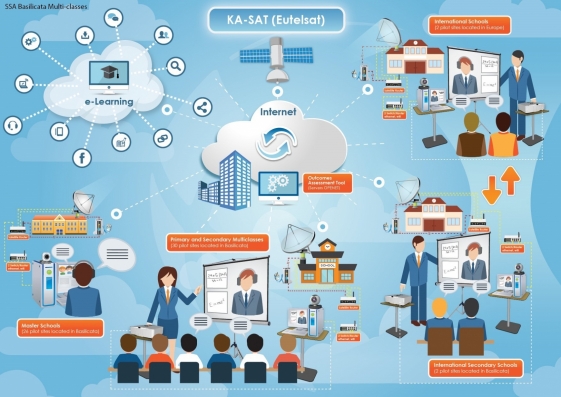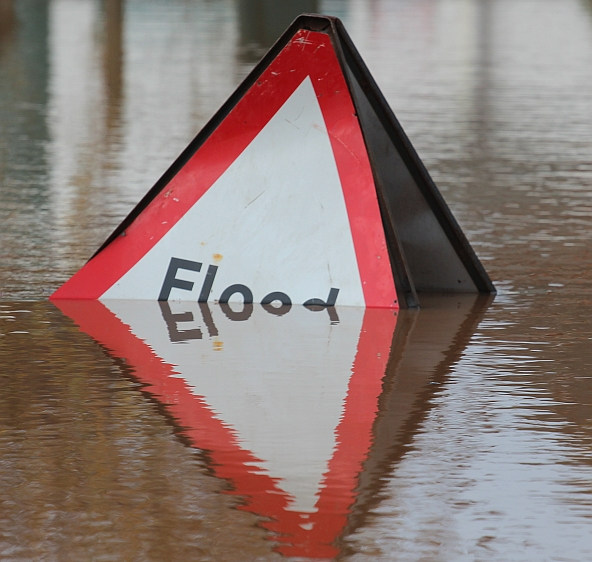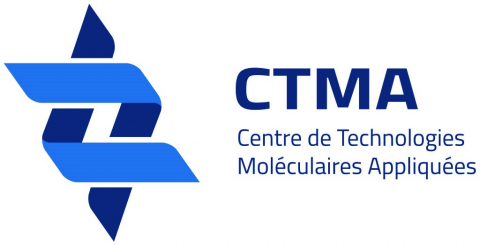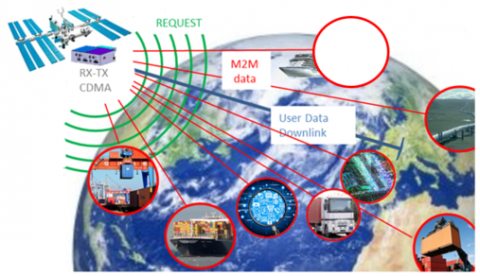Reducing the risk of bird strikes using satellite images and Ascend’s Normalised Difference Water index software (NDWI)
BROWSE PROJECTS
Based on user needs and industry skills, the evolution of customized solutions and the establishment of innovative services is accomplished through project activities. Focusing on various thematic areas, relevant information on the project activities is provided below.
FAAPS
Status date: 19 March 2013
Floods affect more people and cause more property damage than many other natural hazards. FAAPS (Fully Automatic Aqua Processing Service) proposes to support emergency management professionals with the provision of flood extent maps even in rain conditions and over large areas.
Dively
Status date: 19 December 2017
Dively is the first mobile application that supports a safe experience for underwater sports fans. Thanks to a powerful combination of environmental data and 3D underwater views, planning your next experience will be a breeze. Designed by divers for divers, Dively presents complex earth observation data and bathymetry in a visual, easy and user-friendly way, with the aim of enhancing your experience while boosting your safety.
CapeOutdoors3D
Status date: 19 December 2017
CapeOutdoors3D prototyped a web-based (and conceptualised a mobile) application for tourists planning outdoor activities in Nature Reserves and National Parks in South Africa. The project linked the space technologies Earth Observation and Satellite Navigation with the aim to provide a 3D virtual reality planning tool for tourists. In addition, Earth Observation based fuel condition maps were developed to support protected area authorities in their fire management activities.
B-LiFE
Status date: 18 December 2017
The ESA IAP-ARTES 20 “Biological Light Fieldable Laboratory for Emergencies” (B-LiFE) Demonstration Project is the follow-on of the B-LiFE Feasibility Study and deals with a new service providing biological analytical capabilities with integrated space assets for emergency response during health crises and epidemics.
KATOUM
Status date: 18 December 2017
KATOUM is a project dedicated to the setting up of tailored EO-based services and products for the sustainability of investments in the Mediterranean karst regions. Are targeted the areas affected sinkholes, landslides and subsidence associated with a sharp local base level/water table level drop. The latest will occur more frequently with the increase of heat waves in summer time.
SWAY4Edu2
Status date: 14 December 2017
Capacity Building activities for rural schools and rural radio stations in Africa based on eLearning platform accessible on-line via the Sat3Play platform.
SAR crop index
Status date: 11 December 2017
This demonstration project is a progression of a number of feasibility studies conducted by AgSpace Agriculture and The Satellite Applications Catapult into the application of Synthetic Aperture Radar (SAR) data for agriculture. The project demonstrates the new crop growth index on 20 UK farms throughout the 2016 and 2017 growing seasons.
MAPP-DEMO
Status date: 11 December 2017
Following a pirates' attack, onboard communication equipments are destroyed: the vessel’s track is lost, the research area grows as time passes, making it harder to deploy rescue assets efficiently.
The challenge is to answer to the question: “Where is my ship?”
The ‘Keep in sight’ service combines a hidden tracker installed onboard and EO acquisitions to provide this critical information.
URGED
Status date: 21 November 2017
URGED addresses an increasing global requirement for the provision of better predictive decision support tools for urban infrastructure managers to enable cities to become more resilient to environmental threats. Through the evolution of Rezatec’s geospatial data analytics and the incorporation of new satellite data sources, e.g. Sentinel 1 and 2, these tools will be accessed through the URGED online platform.
DART
Status date: 09 November 2017
The DART service aims to offer affordable medium distance transportation capabilities to Polish professionals as primary target market. DART will be based on the use of light aircraft located all over the country, by exploiting GNSS-based approach procedures and remote AFIS services. It ambitions to be much cheaper and flexible than current air-taxi like services.
MarIA
Status date: 15 September 2017
This project has developed a cloud-based system to support more efficient management of sustainability standards in commercial fishing and processing operations. The system developed allows for the inputting of information manually into smartphones/tablets and the capture of information from sensors on-board fishing vessels (including GPS position), whilst at sea, which is sent via satellites to a central database. This database is viewable by prospective customers before the catch is landed.
InsureApp Service
Status date: 01 April 2014
This feasibility study carries out an analysis of the most critical elements with respect to technical feasibility and viability (economic as well as non-economic) of a web application aimed at improving the efficiency of the management of insurance claims with a focus on weather-related hazards
SATLAS
Status date: 05 September 2017
SATLAS is an Idea Incubator, developed for and offered to innovators who want to “Start, Integrate and Test” their SatCom related concepts in an easy, light and quick way, taking benefit from the support, mentoring, services and tools made available from the SATLAS consortium (SES Techcom, SatADSL, Newtec).
SatApps
Status date: 19 September 2017
Internet of Things/IoT – M2M – industry 4.0 – these headlines are representing large user groups which have an urgent need of a globally available, low-cost, secure data service, dedicated to very small data volumes per sensor and for use also in remote areas. The objective of the study is to perform an in depth requirements analysis on 2 focus pilot user groups: railway transportation and container/waste management.
SUMO
Status date: 05 September 2017
SUMO is a service to assist in the planning and monitoring of marine operations for offshore wind farms. The service integrates diverse information to allow the monitoring and forecasting of metoceanic conditions and track the locations of vessels and personnel involved.
This improves the management and coordination of the construction, operations and maintenance activities and leads to increased efficiency and safety.









































